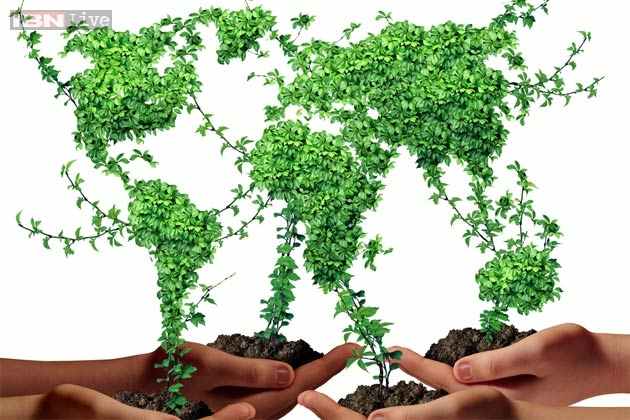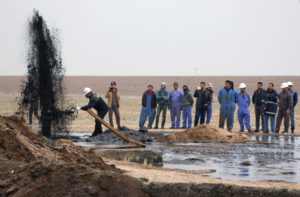
The global community, in light of increased geopolitical tensions, economic crisis, magnified disparities, global warming and other socio-economic incidents, has realized that the current fossil fuel based-economic model is not a viable one. Agenda 2030 and its Sustainable Development Goals, then, can be viewed as the global response to this problem. There is now a general consensus regarding the introduction of biomass fuels and renewables as part of the economic model, which will enable nations to progress on the path to an inclusive sustainable development- in other words introduce a bio-economy.
What is Bio-Economy?
Conspicuously, world’s basic commodities are derivatives of petroleum and gas. The world also has realized how with enhanced usage of these products the humanity has endangered the socio-economic, geopolitical and environmental landscape— making the “green stuff” all of a sudden of highest importance. Thus, many nations are aiming to shift from fuel-based to bio-resource based economy.
As per European Union “The bioeconomy comprises those parts of the economy that use renewable biological resources from land and sea – such as crops, forests, fish, animals and micro-organisms – to produce food, materials and energy.”
In addition to this, many nations are pursuing their own bio-economy model, such as Germany who has mapped its national research strategy “Bio-Economy 2030”. It illustrates that “The concept of bio-economy covers the agricultural industry and all manufacturing sectors and their respective service areas, which develop, produce, process, reprocess or use them in any form biological resources such as plants, animals and microorganisms. Thus, it achieves a variety of industries such as agriculture, forestry, horticulture, fisheries and aquaculture, plant and animal breeding, food and beverage, wood, paper, leather, textile, chemical and pharmaceutical industries up to branches of energy industry.”
How to shift to Bio-Economy?
It is a two-phase process which will bring about the necessary transformation for a sustainable future. This Sustainable Bio- Economy will comprise of:
Phase I: Reducing the exposure to Fossil Fuels— The bio-economy model is yet to mature. Until then, several economies are dependent on fossils. They are therefore too weak for such drastic approach and require a steady phase-out process for fossils, administered in small and gradual amounts.
Phase II: Recourse to Bio-Renewable Resources— Fossil Fuels to be replaced by renewable bio-resources with a vertical cum horizontal implementation of bio-economy. Essentially, it calls for a gradual change of raw materials from conventional to unconventional. This shift entails a shift from extracted non-renewables to the harvested renewable resources.
Autocratic versus Democratic Resources

A steady increase of the world population, especially in countries like China and India, demands a rise in securing a constant supply of raw materials at reasonable prices. This has led, for instance, China to deal into pipeline diplomacy within the Eurasian Region. As such, the countries are attempting to break away from the vicious circle of dependence on autocratic oil flowing from Saudi Arabia, Iran, Iraq or Venezuela. However, “democratic oil” is no good either and so is replacing oil with other fossils such as natural gas and shale etc.
Realizing this, the nation-states are now investing in renewable technologies, which are purely democratic in nature, given the international initiatives taken recently. Few of these are:
- Climate Treaty— Renewable Technology acts as a response to the climate mitigation problem
- Agenda 2030 SDGs— Renewables also serve as an answer to Goal 7— “Access to Affordable and Clean Energy” which is intricately linked to all other 16 goals
- Habitat III— Includes sustainable urban development which entails a smart city model “a smart-city approach that makes use of opportunities from digitization, clean energy and technologies, as well as innovative transport technologies, thus providing options for inhabitants to make more environmentally friendly choices and boost sustainable economic growth and enabling cities to improve their service delivery.”
- International Solar Alliance— It is a grouping of more than 121 countries (mostly sunshine countries) which will work for work for efficient exploitation of solar energy to reduce dependence on fossil fuels.
However, there are factors which can threaten the evolution of a democratic such a green economy:
- It should be noted that any technology and bio resource is only renewable when its rate of regeneration is faster than that of consumption.
- The shift from pre—industrial to fuel based economy took more than 100 years. Today again we are standing at the same juncture where people have turned towards sustainable alternatives to depleting fossils— and this won’t be an easy or quick process.
- Next, the disastrous legacy of the fossil based economy coupled with problems like food and water scarcity, climate change, pollution among others. This means a complete upheaval of the existent situation will itself require significant time and effort.
- For instance, this legacy includes climate change, onset of natural disasters such as droughts, floods etc. which directly hit the economic sectors of agriculture fisheries etc. and the whole of society thereafter.
- Lack of effective planning and timely implementations can also prove to be dangerous, given the paucity of time.
The three main stakeholders, who need to play an active role here are:
- Industries— they should be the first ones to implement the bio-economic models in order to control pollution and reduce environmental pressure.
- Governments— they need to draft green national strategies to control the emissions, wastage etc. and streamline the industries and the public, aligning their needs with that of the environment.
- Consumers— balanced consumption and eco—friendly practices should be promoted.
In the end the environment needs to be left alone, along with limited waste and emissions. Given the decades of abuse, bio-economy needs to brought in. Innovative environment solutions need to be created. If at all there should any other industrial revolution, it should be a green one.
